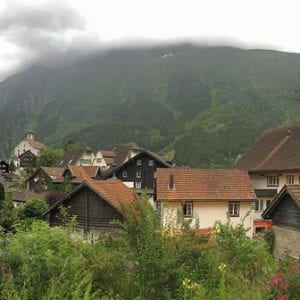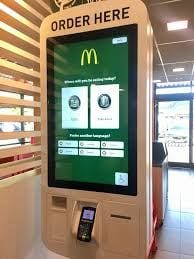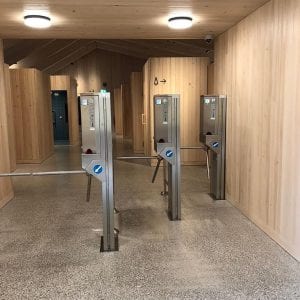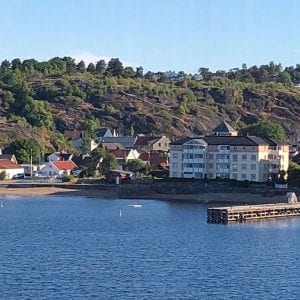This summer Mike and I decided to visit Scandinavia and because we had never seen the scenery and thought that a road trip would enhance the journey. Using a car for travel has its advantages in that you can see more things and are not beholden to a tight schedule BUT it has it challenges as well. The driver, in this case, Mike will be tired at the end of the day. Germany must be undertaking a major infrastructure project as everyone (and we went on many) of the autobahns that we traveled were under construction adding up to two hours to our daily travel. Maintenance of European highways are funded in part by tolls and vignettes. The following in no particular order are some of my take-aways that might help if you ever plan to travel in Europe by car (or any other mode of transportation).
- Vignettes are a road tax that some European countries might use instead or in addition to tolls. This trip we traveled through two countries that use this type of funding. In Austria the vignette cost was about $10 and can be bought at gas stations in Italy before you enter. You place the sticker on the driver’s side of the car in the front window. It covers a particular period of time, in this case ten days. Austria also used tolls. Switzerland pulls cars over as you enter the country and charges $42.00 but it lasts a year. We bought both vignettes with credit cards which is good as Switzerland does not use Euros and we were only passing through the country, staying long enough to eat dinner.
- Tolls can also be paid with credit cards. Italy uses the toll system and you will pay at least $30 if you drive around on the Auto Strada much. Norway uses an electronic toll system so we aren’t sure yet what we will owe. A photo is sent to where the car is registered and in our case that would be the Europe Car rental place.
- All of the countries we travel through have rest stops, which include gas stations, a restaurant, bathrooms or WC as they are referred to, and some have fast food like McDonalds or Burger King. We enjoy these places as we don’t have to leave the interstate and try to locate what we need. ALL of the McDonalds in Europe have kiosks which allow you to order in English, pay for it, and pick up your food at the counter or have it delivered to your table. I really don’t understand why this hasn’t caught on in the states. Even when places are crowded we have gotten our food in a timely fashion. Their restaurants are often cafeterias that serve food that is quite good. Marche is one such chain that charges by the plate size. Using restrooms in Germany and Switzerland costs money, typically 70 cents. You will receive a 50 cent coupon to be used for in the shop if desired. You can accrue them and use more than once. They are usually very clean.
- We stayed in a combination of hotels. To maintain our Hilton Diamond Status and receive their perks which are considerable in Europe, we use this chain wherever they exist, which is usually in large cities. In smaller towns and all of Scandinavia I used TripAdvisor to locate budget friendly hotels and after choosing the place, used Booking.com to reserve the room. TripAdvisor has begun allowing patrons to book through them but I found they wanted payment up front and I want to privilege of changing my mind. We stayed at nine different lodgings and they all met my expectations in cleanliness and comfortability.
- European hotels, especially those not associated with an American chain are usually smaller than American hotels. A double is two beds pushed together with a sheet and a duvet. Sometimes there is a piece of fabric that runs across the end of the bed for decoration and decorative pillows. European hotel pillows are usually filled with feather and somewhat flat. A number of the places we stayed had extra pillows available. Many of the hotels do not offer wash clothes, facial tissue, or clocks. I use one of the hand towels as a wash cloth, carry tissues with me, and look at my cell phone for the time. We stayed at a place this time that did not include a shower rug but they issued us an extra hand towel in its place. Many offer complimentary water because Europeans tend to drink bottled water instead of tap water. Internet was free at all of the places and usually good.
- Breakfast was part of the price at all but one of the places we stayed. A European breakfast is large having cereals, yogurt, fresh fruit, breads/pastries, deli meats and cheeses, tomatoes and cucumbers, as well as hot food like eggs, sausages, bacon, beans, etc. Many offer fresh orange juice, a selection of coffees like cappuccinos, and tea. In Norway they served reindeer meat in gravy. I declined this option but had a piece of the homemade chocolate they served instead.
- I have read in many places that European portions of food are smaller than in the states. I have really not found that to be true. Mike and I often share an entree and add dessert. There a NO free refills on drinks so sodas are a poor choice in Europe. Opt for water instead.
- Copenhagen is a very expensive place to visit. We averaged about $150-$200 a night for hotels on this trip and two of them were under a $100 but in Copenhagen we paid $400 a night with no breakfast as that cost an extra $44 a person per day. The room was lovely, in the center of everything we wanted to see, and by the water but we paid for that privilege. Oslo, Norway was just as much fun and cost way less.
- When traveling by car, a navigator system is a must and a European cell phone data plan a help. The navigator system chose the fastest way to get from one place to the other, even when it meant stopping in traffic jams and helped to get into and out of large cities with small streets. We used our cell phones to find shopping and dinner choices. Side note: Bicycles are very popular in Europe so you will have to watch for those when you drive as well as other hazards.
- Our trip to Scandinavia required two ferry rides. I learned that it is best to book ahead. One of the rides was four hours long so I paid extra for business class. I was glad to do it because we had to get up at 4:15 to get to the port on time and recliners in this area allowed for napping. Both ferries offered food and drink.
- Always try to book in advance tickets for popular tourist places. We have done this in the past for art museums in Florence, the Sistine Chapel in Rome, and the Anne Frank house in Amsterdam. The ticket reserves you a time and you can skip the long lines that are often in the hot sun. This trip we found that the National Art Museum in Oslo was a block away and already had a line ten minutes before opening but because it is not as famous as the places I previously listed, we got in just fine.
We are very glad we took this trip but on the ferry over to Denmark, a German couple made an accurate observation that Americans tend to spend little time in one place preferring to move on. We were living proof of that so we feel we got an overall impression which was short of details. Our next trips will involve less moving around and more exploration of one place. One of my favorite lodgings was in the countryside of Lower Saxony in Germany. It was small resort/conference center and was very peaceful and quiet. I am looking forward to staying at more places like that.



